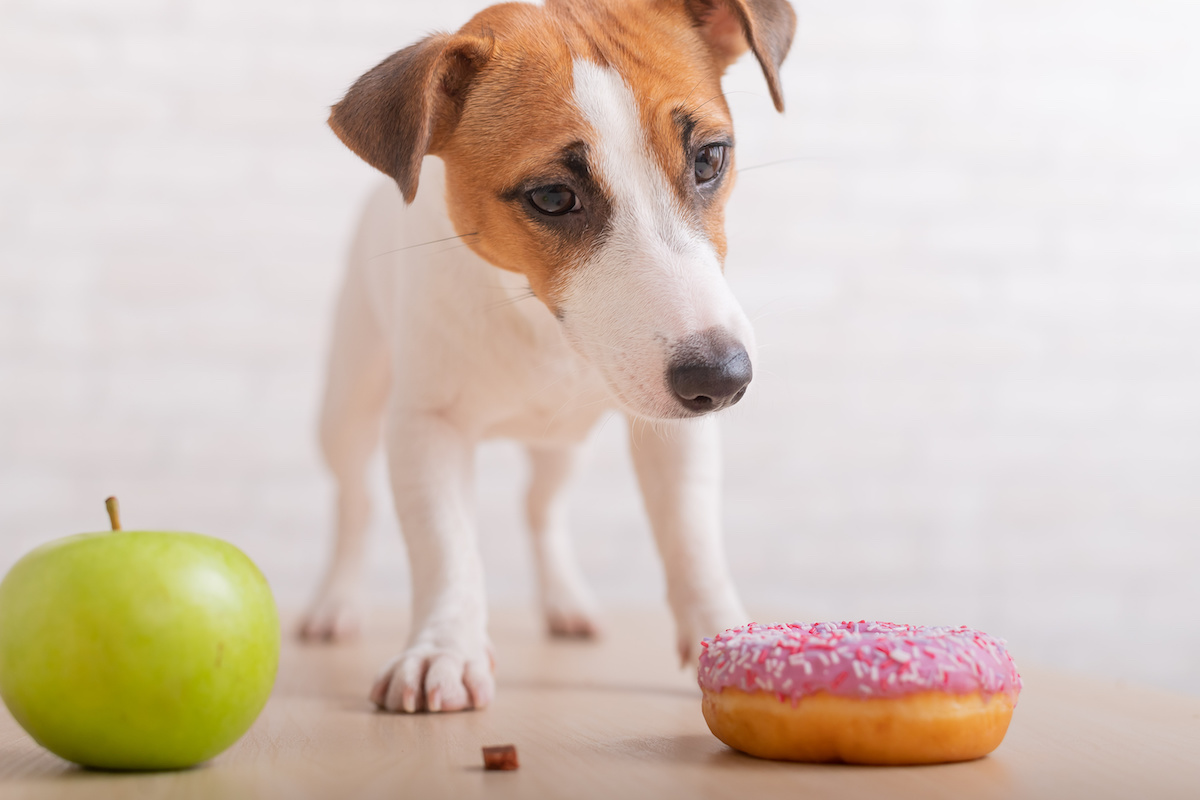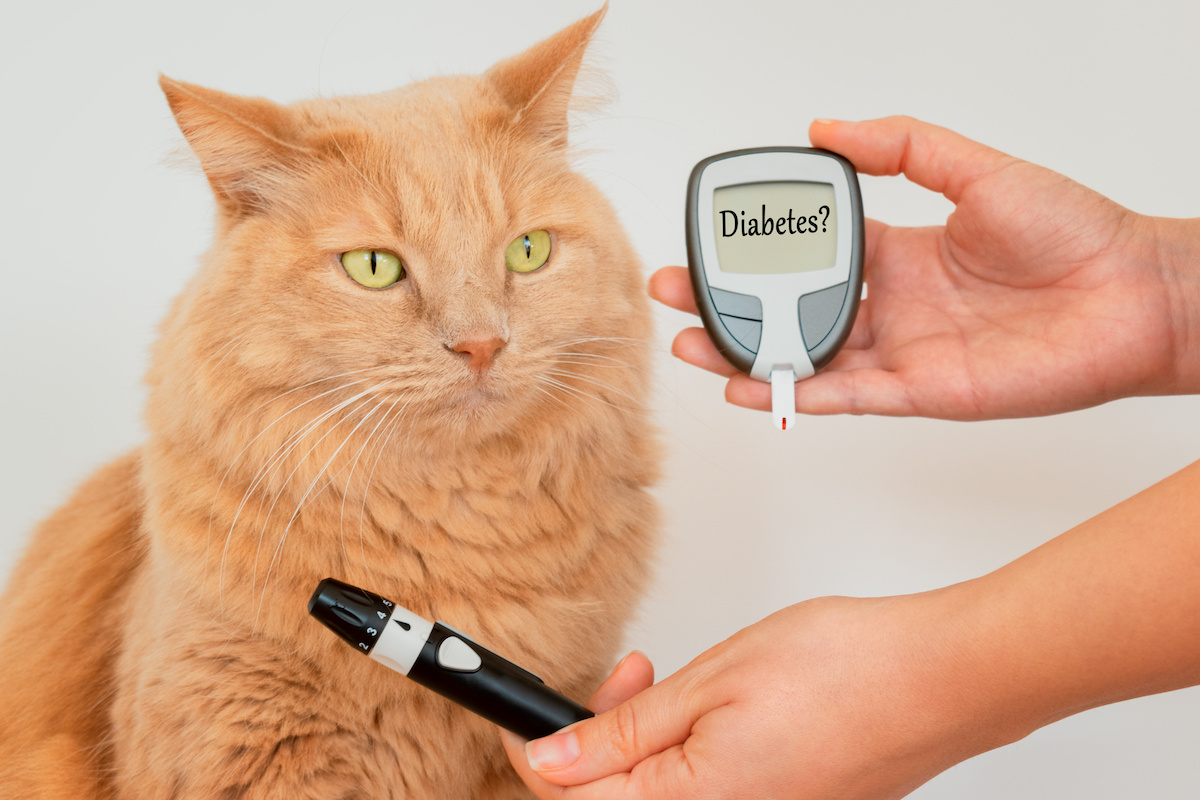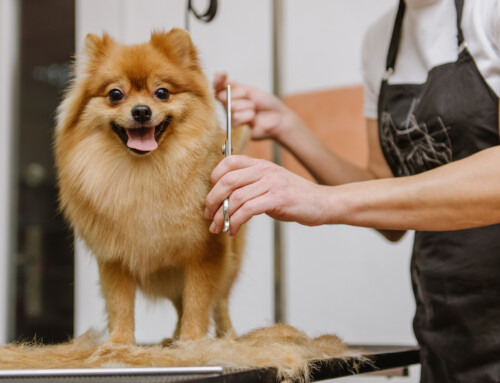Did you know that November is National Diabetes Awareness Month? It is diabetes month for people, but it is also for pets. The truth is that both humans and animals alike can have diabetes. The good news is that it doesn’t mean that quality of life must suffer. In this blog, we’ll discuss everything you need to know about pet diabetes and how to care for your furry friend.
What is Cat or Dog Diabetes?
If you’ve never had a pet with diabetes, you might be wondering what it is like or why it happens in the first place.
. Pet diabetes is a condition where the body cannot move enough, or any, glucose into the cells. Glucose is otherwise known as sugar.
Why is Blood Glucose Important?
Blood glucose serves as an energy source for your cat or dog. Each time your cat or dog eats, the food is broken down into nutrients that are absorbed by the body. Glucose is essential in nutrients, and your pet’s tissue cells use glucose for energy and to function for day-to-day activities.
What is Insulin?
When most people hear about insulin, they typically think about diabetes. But what is insulin, and why does it matter to your pet?
Produced by the pancreas, insulin is a hormone that allows glucose to enter into the cells. When the glucose enters into the bloodstream. Your cat or dog’s pancreas is triggered to produce more insulin. When the pet is healthy, the insulin will attach itself to receptors on the cell and allow the glucose to enter the cell for energy use.
However, sometimes this system does not work correctly. If your pet is diabetic, the insulin will not bind to the cell receptor. Furthermore, the pancreas may not be able to produce enough insulin at all. If the cells do not respond to the insulin properly, glucose will build up in the bloodstream and it does not give the body the energy that it needs.
What are the Symptoms of Diabetes in Pets?
It’s important to pay attention to the behavior of your pet. This is especially true when it comes to detecting any type of potential medical problems, including diabetes.
Your cat or dog will exhibit a certain set of symptoms if they are diabetic. Make sure you keep an eye out for the following:
- Excessive thirst
- Weight loss
- Depression
- Changes in appetite
- Cloudy eyes
- Poor vision
- Vomiting
- Increased thirst
- Increased urination
- Chronic or recurring infections
- Skin infections that take an abnormally long time to heal
- Changes in your pet’s coat
- Low energy
- Decreased mobility
Allowing pet diabetes to go untreated can result in even more serious health consequences. Your cat or dog can be subjected to cataracts, seizures, blindness, and even kidney failure. Unfortunately, the later stages of kidney failure are irreversible and fatal.
The good news is that a diabetes diagnosis for your pet is not terminal! With some help and medication, your cat or dog can still live a long and happy life.
Keep in mind that diabetes symptoms do not necessarily mean your pet has diabetes. There are other diseases and conditions that can be causing these issues, such as urinary tract infections, pancreatitis, and kidney infections.
Now that you understand the seriousness of diabetes and pets, it’s time to explain the difference between Type 1 and Type 2 diabetes.
Pet Diabetes: Type 1 and Type 2
Just like people, there is more than one type of Diabetes. Your pet can be Diagnosed with either type 1 or type 2 diabetes which is outlined by the following:
Type 1 Diabetes
First, know that dogs are more likely to develop Type 1 Diabetes. Type 1 diabetes is an insulin deficiency in the body. It means that your dog is not able to produce insulin, which is needed in the pancreas for helping cells to use glucose.
The bad part about type 1 diabetes is that it is not reversible. If your pet was diagnosed with type 1 diabetes, understand that they will have diabetes for the rest of your life. However, we must once again emphasize that this is not a terminal illness!
Type 2 Diabetes
While dogs are more likely to develop type 1 diabetes, cats are more likely to develop type 2 diabetes. However, this does not mean that dogs are immune to having type 2 diabetes. Dogs can develop type 2 diabetes if they are obese or if they are taking certain kinds of medication.
Type 2 diabetes happens when the pancreas is able to make insulin, but the body’s cells are not responding to the insulin.
The good news about Type 2 diabetes is that it is sometimes reversible. This is accomplished through a healthy diet and exercise.
What Causes Pet Diabetes?
When your pet has diabetes, there are several reasons and causes behind it. About 1% of dogs will become diabetic as they age and 1 in 500 cats will be diagnosed as diabetic.
Pets of any age, gender and size can develop diabetes. However, there are pets that are at higher risk as well as common breeds with genetic predispositions to develop diabetes.
High Risk Pets:
- Male cats
- Unspayed female dogs, which are twice as likely to get diabetes as unspayed female dogs
- Inactive pets
- Older cats and dogs
- Pets that have or had pancreatitis
- Pets with hyperthyroidism
These are some of the common dog breeds with genetic predispositions for developing diabetes:
- Doberman pinschers
- Dachshunds
- Golden retrievers
- Labrador retrievers
- Pomeranians
- Cocker spaniels
- Terries
- Toy poodles
- German shepherds

How to Prevent Pet Diabetes
If your pet is not diabetic, there is a silver lining. There are ways that you can prevent diabetes from occurring in the first place.
Whether your pet is a cat or dog, the following actions can help.
Get Your Pet on a Healthy Diet
Obese pets are more likely to develop diabetes. This is the case with both cats and dogs. However, getting your cat or dog on a healthy diet and an appropriate body weight can help immensely when it comes to preventing diabetes in dogs and cats.
What does a healthy diet look like for your pet? This depends on if it’s a cat or dog in question. Dogs and cats both have their own requirements for food.
Healthy Cat Diet
How do you make sure that your cat eats a healthy diet? Cats are carnivorous creatures, so they must consume meat to stay healthy.
With cats, dry food does not meet their needs in the same way as wet food. Cat kibble is low in animal protein as well as water. Investing in high quality canned cat food is a good place to start for feeding your cat a healthy diet.
Meanwhile, you’ll also need to make sure that your cat eats a balanced diet as well. You don’t want to overload your cat with carbohydrates from their food, which can lead to weight gain. This is why it’s also important to invest in high quality canned cat food.
Can you make homemade meals for your cat? For the most part, yes. But it’s best to speak with a veterinarian before doing so. Your veterinarian can give you the green light on what’s the healthiest choice for your cat to live a long and happy life. You may need to consider additional vitamins and supplements if you choose to feed your cat homemade cat food.
Lastly, you’ll certainly want to make sure that you avoid any foods that are toxic to cats. Cats cannot eat foods such as chocolate, grapes, raisins, and onions.
Healthy Dog Diet
Unlike cats, dogs are not true carnivores. Dogs have a carnivore bias and traits, but thanks to evolution and human exposure over thousands of years, they can survive on different types of food.
But this doesn’t mean that you should only feed your dog table scraps—although your dog would probably enjoy it, it’s not the best for him. It’s important to feed your dog a nutritious and balanced diet to prevent diabetes and even increase lifespan.
Carefully check packaging labels for something called a statement of nutritional adequacy. The food should meet nutrient profiles adhered to by the Association of American Feed Control Officials.
In terms of feeding your dog, you’ll need to consider his activity level. If your dog does not exercise, he can have roughly 10% less than what the surviving size suggests. Dogs that exercise intensely outdoors can take up to 20% to 40% more.
If you are unsure about how much to feed your cat or dog, please speak to your veterinarian.
Are You Worried About Pet Diabetes?
Meanwhile, if you believe your pet has diabetes, please contact us to schedule an appointment. Determining the health status of your pet can potentially help save its life.








